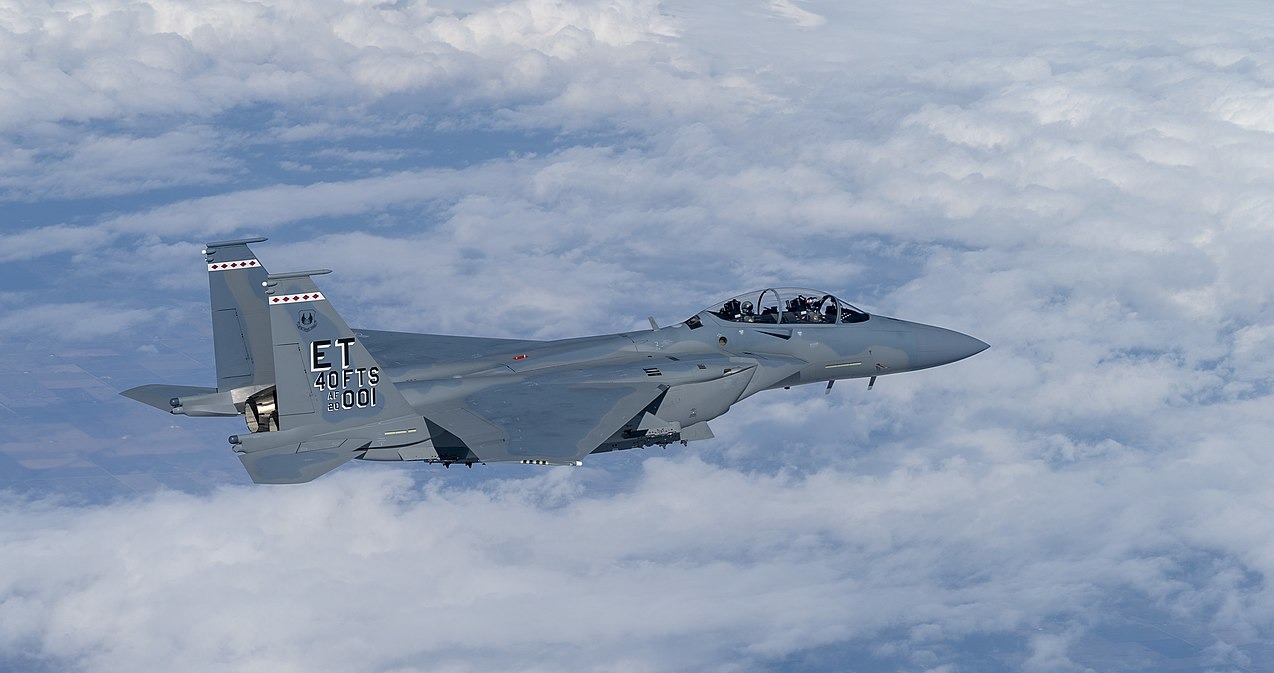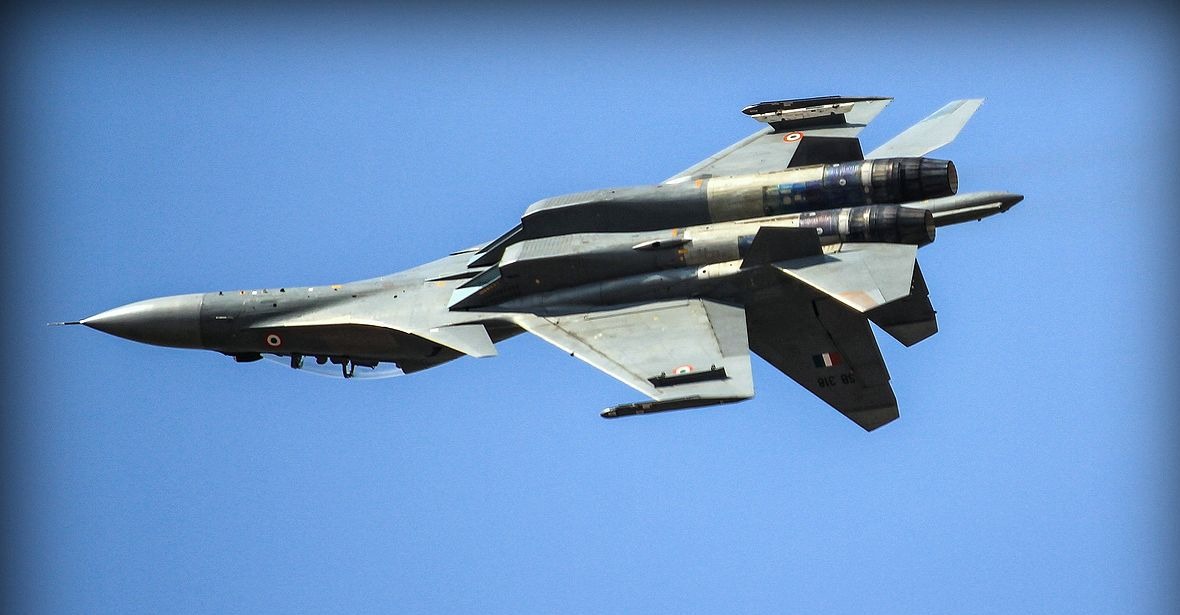A pinnacle of aeronautical design, this aircraft stands among the world’s swiftest combat planes. Its combat record is extraordinary, with over 100 kills in dogfights and a flawless record of never being shot down in aerial combat. This unparalleled history cements its place as a legend in military aviation. However, despite its remarkable combat prowess, this fighter jet faces a challenge: attracting buyers in today’s market.
Yes, we’re talking about none other than the iconic Boeing F-15 Eagle, a testament to American ingenuity and engineering excellence.
Originally designed by McDonnell Douglas (now part of Boeing), the F-15 is a single-seat, twin-engine, all-weather fighter jet that was built to counter the USSR’s MiG series of fighters during the Cold War.
Beyond the United States, the F-15 has been adopted by several other nations, including Saudi Arabia, Japan, Israel, and South Korea, utilizing different variants to suit their specific needs.
F-15 Eagle: A Half-Century Of Dominance
The F-15 Eagle first flew in 1972, and by 1976, it had become an integral part of the US military’s aerial arsenal. With its unmatched longevity and versatility, it remains a front-line fighter unmatched by any other US aircraft. After five decades, the F-15 is still among the fastest and most versatile fighter jets ever built.
Initially designed to achieve Mach 3.0 speeds, the F-15’s requirements were adjusted to Mach 2.5 to control production costs. Despite this modification, the F-15 emerged as the pinnacle of air superiority fighters. In 1988, the Strike Eagle variant was introduced, focusing on deep-strike ground attacks, close air support for infantry, and sophisticated electronic warfare capabilities.
To date, at least 1,198 units of the F-15 A/B/C/D/J/DJ variants have been manufactured, along with 61 F-15K Slam Eagles for South Korea. Furthermore, over 525 enhanced Strike Eagle variants are currently in service, with more expected.
Ongoing “Block” upgrades, such as the F110 engine swap, have kept the F-15 at the forefront of aviation technology for decades. The latest model, the F-15EX, features an increased payload capacity, cutting-edge fly-by-wire controls, a digital cockpit, modernized sensors, improved radars, and robust electronic warfare capabilities.
While the F-15’s aging airframe and lack of stealth capabilities may not rival the latest 5th and 6th-generation fighters, it continues to provide the USAF with a versatile, multi-role platform for airspace and base defense, close air support, deep strikes, reconnaissance, and electronic warfare. The USAF’s plan to acquire 144 F-15EX fighters underscores its ongoing strategic value.
Capabilities That Stand The Test Of Time
Recognized as one of the world’s fastest fighter jets, the F-15 is the most successful modern fighter, with over 100 victories and zero losses in aerial combat, primarily achieved by the Israeli Air Force.
Its record surpasses that of the F-16 (76-1), the F-14 Tomcat (135-4), and even boxing legend Mike Tyson (50-6). No other fighter in history boasts a better record in actual air combat.
Over the past five decades, around 125 US F-15s have been lost, mainly due to pilot errors in low-visibility conditions, ground incidents, or training accidents. This translates to an outstanding service record of less than two aircraft destroyed per 100,000 flight hours, a testament to the F-15’s durability and performance.
The F-15 was a pioneer in aerial combat. It was the first fighter jet capable of simultaneously engaging multiple enemy targets from distances of up to 100 miles.
With its advanced nose-mounted radar system and cutting-edge air-to-air radar-guided missiles, the F-15 could eliminate threats before they even realized what was happening, setting a new standard in aerial warfare technology.

India Unlikely To Buy F-15s?
In 2022, Boeing received a crucial license from the US government to explore the possibility of selling the F-15EX fighter jet to India. This move enabled Boeing to respond to the Indian Air Force’s (IAF) request for information (RFI) as it seeks to acquire 114 multi-role combat aircraft (MRCA) from the global market. However, the chances of India choosing the F-15 remain slim.
So, why is India not purchasing the F-15? Why has this world-renowned fighter jet not found a place in India’s military lineup?
The primary reason is that India already operates around 270+ Sukhoi-30 jets developed by Russia’s Sukhoi Aviation Corporation. This 4th-generation fighter was specifically designed to compete with the F-15 and remains a highly capable aircraft for India’s defense needs.
India is currently pursuing a massive plan to upgrade its existing Russian-origin Sukhoi-30MKI fighter jets. This project aims to equip the aircraft with advanced radars, avionics, longer-range weaponry, and multi-sensor fusion technology, ensuring they remain competitive in air combat for the next 30 years.
The Su-30MKI—the Indian variant—is a formidable multi-role, air superiority aircraft powered by twin engines. Designed to meet the diverse needs of the Indian Air Force, this twin-seater is capable of performing multiple roles simultaneously, including those of an interceptor, bomber, and trainer.

The jet is driven by two powerful after-burning turbofan Lyulka AL-31FP engines, making it both agile and robust. With a wingspan of 14.7 meters, the Su-30 is indeed a large aircraft, reflecting its versatility and strength. The Indian variant of the Su-30 has undergone numerous modifications to cater specifically to the IAF’s operational requirements.
A report by the Times of India in July 2024 estimated the cost of the first batch of 84 upgraded Sukhoi jets at approximately Rs 63,000 crore ($7.87 billion). These enhancements aim to make the ‘Super’ Sukhois more powerful and cost-effective, offering capabilities akin to fifth-generation fighters, albeit without stealth.
While the F-15 is considered slightly superior, it also comes with a significant price tag. The defense department prices the F-15EX at $110 million per unit, excluding the cost of essential equipment like simulators, EPAWSS, and targeting/IRST pods. Including these elements, the total cost per F-15EX unit rises to approximately $136.7 million.
Also, Opting for the F-15 would likely lead to logistical and maintenance challenges for the Indian Air Force, potentially impacting their operational readiness.
Comparing F-15 Eagle & Su-30 MKI
The F-15 Eagle and the Su-30 MKI exhibit a little bit of differences in performance and armament.
The F-15 Eagle boasts a higher top speed compared to the Su-30 MKI. While the Su-30 MKI can achieve speeds up to Mach 2, the F-15 Eagle reaches slightly over Mach 2.5. Additionally, the F-15 has a superior maximum range of 3,900 kilometers, compared to the Su-30’s 3,000 kilometers.
Both aircraft feature 12 hardpoints, allowing them to carry a wide array of weaponry. The F-15 Eagle can be equipped with up to eight Raytheon AMRAAM radar-guided, medium-range air-to-air missiles, up to four Raytheon AIM-7F/M radar-guided Sparrow missiles, or up to four Lockheed Martin/Raytheon AIM-9LM infrared-guided Sidewinder missiles.
On the other hand, the Su-30 MKI offers a diverse missile arsenal, including the Kh-29L/T/TYe, Kh-31A/P, Kh-59M, and Nirbhay.
The Indian Air Force’s Su-30 fleet is also capable of launching BrahMos air-launched supersonic cruise missiles. Additionally, the Su-30 MKI can carry rocket pods and KAB-500 and KAB-1500 laser-guided bombs alongside air-to-air missiles such as the Vympel R-27R, R-73, and R-77.
Conclusion
The F-15’s legendary status in air combat is undeniable. However, India’s decision to focus on upgrading its existing Sukhoi fleet rather than investing in the F-15EX reflects a pragmatic approach to modernizing its air force.
As the F-15 continues to evolve, it may yet find new markets, but for now, its path into the Indian Air Force remains uncertain.
- Shubhangi Palve is a defense and aerospace journalist. Before joining the EurAsian Times, she worked for E.T. Prime. In this capacity, she focused on covering defense strategies and the defense sector from a financial perspective. She offers over 15 years of extensive experience in the media industry, spanning print, electronic, and online domains.
- Contact the author at shubhapalve (at) gmail (dot) com.




